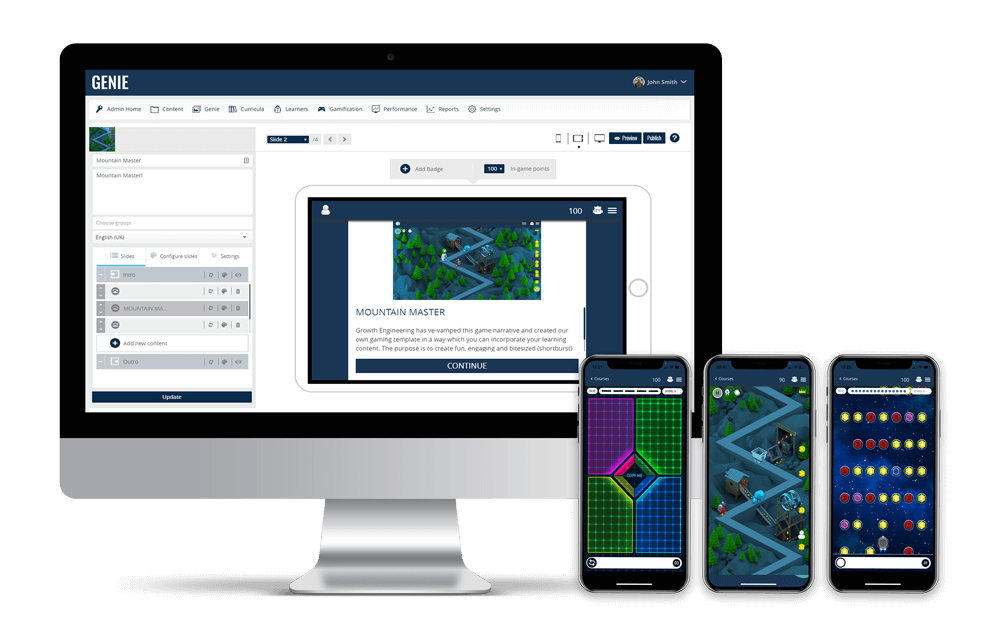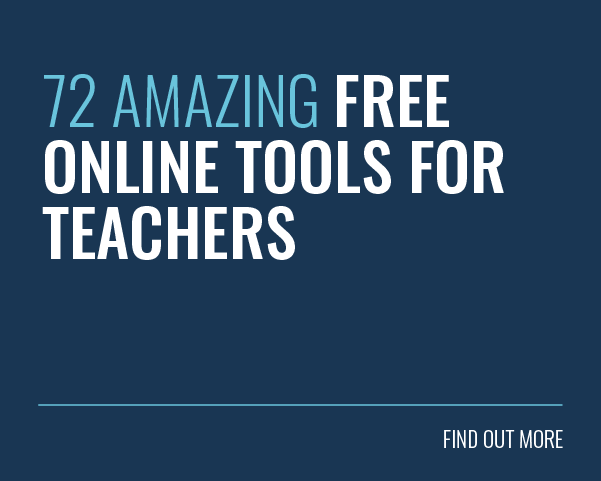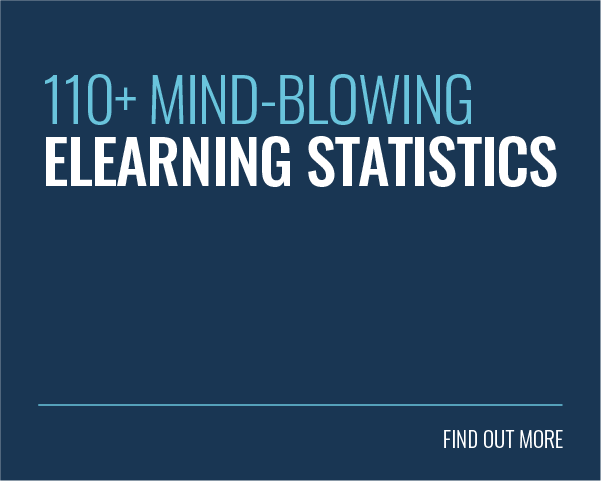 As lockdown restrictions begin to ease across the globe, entire industries have started to shudder back to life. As a result, many employees are being reintroduced into the global workforce. This can be a challenging process for all involved. After all, many of these employees have been out of action for a number of months. Regardless of their talent, it can be difficult to get back into the swing of things after a period of prolonged absence. So, how do you go about re-onboarding these employees?
As lockdown restrictions begin to ease across the globe, entire industries have started to shudder back to life. As a result, many employees are being reintroduced into the global workforce. This can be a challenging process for all involved. After all, many of these employees have been out of action for a number of months. Regardless of their talent, it can be difficult to get back into the swing of things after a period of prolonged absence. So, how do you go about re-onboarding these employees?
Their time out of the business will mean that they have a lot of catching up to do. They will also have unique training needs and require bespoke communication packages. Many may also be dealing with the kind of underlying wellness and stress issues that tend to arise during periods of great uncertainty. This begs the question: what’s the best way to support and begin re-onboarding your employees?
If you have a learning management system, then you’re already well-positioned to respond to this challenge. In this article, we will share eight ways that you can leverage your online learning platform to support and re-onboard your returning employees. But before we get to that, let’s first explore the challenge in more detail.
The Challenge
As of June 14th, 2020, approximately 9.1m jobs from 1.1m different employers were furloughed in the United Kingdom as part of the government’s job retention scheme. Over in the US, a $2.2tn COVID rescue program has been launched. This has expanded states’ ability to provide unemployment benefits. It also included one-off cheques of $1,200 being sent to households who earn under $75,000 per year.
Similar schemes have been rolled out across the globe to help protect jobs and safeguard economies. Of course, these are all just temporary measures. The ultimate goal is to bring as many employees as possible back into the workforce. With lockdown restrictions beginning to ease across the world, this movement has already begun.
But this in turn creates a new problem. The sheer numbers involved are staggering. The British Chamber of Commerce reports that seven out of 10 UK firms have furloughed workers. These figures are reflected throughout the rest of the world. What’s more, many furloughed employees have been out of action for months.
As such, the challenge will be for organisations to find an effective and efficient way for re-onboarding large groups of employees during a period of great upheaval in the world. To compound the issue, the global pandemic has decreased the appetite for face-to-face training interventions.
As such, online learning platforms will have to take on the mantle. Luckily, most of these solutions are well equipped to meet this challenge head on. Over the course of this article, we will outline eight top tips to help you support your returning employees through your learning management system. Let’s get started!
1. Create a ‘Welcome Back Pack’ Pack
Your returning employees will likely be feeling a degree of anxiety about their reintroduction to the workforce. They may feel uncertain about where they fit within the new world order. What’s more, they may find it difficult to prioritise their next steps. Finally, they may also have concerns for their safety and mental wellbeing within their work environment.
The best way to start addressing these concerns, is to create a ‘Welcome Back Pack’. This pack should provide answers to all potential questions. It should provide access to further resources to help fill knowledge gaps. We recommend making a digital version of this pack available through your learning management system. This will ensure it’s easy to find and readily accessible at all times.
Your Welcome Back Pack should make it clear that you care for your returning employees’ wellbeing and have crafted a clear re-onboarding learning journey for them.
2. Ensure ‘Must Know’ Info is Easy to Find
Take the time to consider what information and resources your returning employees will need. What policies have changed? Are there new guidelines employees now need to follow? What further support are you able to provide? Use this information to set clear learning objectives. You can then ensure all this information has been captured in an easy to understand digital format. Where possible, utilise video and interactive elements to drive key points home.
Once assembled, you should upload this content to your learning management system. Make sure it’s easy to find by configuring a specific library category or level pathway for re-onboarding returning employees. You should also ensure that all relevant content is tagged with appropriate keywords, so that it appears as expected within user searches.
Of course, making this content available is only half the battle. You also need to clearly communicate your expectations to your returning employees. This can be done via the Welcome Back Pack and other communication channels. You should also run reports to ensure progress is being made. You don’t want to let small groups of employees get left behind!
3. Encourage Employees to Create a ‘Return to Work Plan’
Getting back into a routine after a break can be tough. If you’ve ever tried to restart a diet, or return to a regular pattern of gym visits, you will know that this is true. Your returning employees will be in a similar position. Whilst some may be keen to get started, others may suffer from post-furlough blues. Work may represent a stark jolt back to reality. Where possible, you should try and support returning employees in this transition.
We recommend encouraging your returning employees to get reflective. For instance, you could ask them to create their own ‘Return to Work Plan’. You can set your own structure for this document. It could encourage employees to answer questions such as:
- How will you ensure you are in the right frame of mind to return to work?
- Do you have an appropriate work from home setup (if necessary)?
- Have you got childcare or elder care provisions in place (if necessary)?
- How will you structure your week to ensure you get back up to speed quickly?
- Do you know who to contact if you run into any issues?
These plans could be completed in workbook format and uploaded to your learning management system. This will ensure managers have access to their team’s plans and can intervene whenever necessary.
CREATE HIGH-IMPACT
LEARNING CONTENT IN MINUTES
Growth Engineering Authoring Tool produces high-impact gamified and game-based training content 10x faster than competing tools. Get started today!

4. Share Mental Health & Wellbeing Content
We are on the brink of a global mental health crisis. According to a Kaiser Family Foundation poll, 45% of Americans say that the coronavirus pandemic has harmed their mental health. What’s more, an Open Evidence research study found that one in two people in the UK felt ‘down, depressed or hopeless about the future’ as a result of the COVID-19 crisis.
Businesses simply cannot afford to ignore these signs. All organisations have a duty of care to those they employ. What’s more, returning employees cannot perform at their best if they are saddled by debilitating mental health and wellness issues.
As such, you should take this opportunity to review your mental health support resources. What content do you have available that will help your employees to better understand and manage their own wellbeing? If this is a gap in your learning arsenal, then there are plenty of online resources that will help you to fill it. Alternatively, you could look to source third party online learning courses and share them through your LMS.
5. Create a Returning Employee Community
Another great way to reduce anxiety and encourage knowledge sharing is to create a learning community for your returning employees. Social learning enabled learning management systems such as The Academy LMS will empower you to create dedicated discussion streams for different groups of users.
These social channels can forge comradery, reduce anxiety and facilitate further self-guided learning. They also provide a means for you to engage directly with your returning employees. For instance, you could challenge them to share their ‘tips for returning back to work’, or share their home working setup.
Your returning employees should also have access to all regular social streams. This will help them to interact with other team-mates, including those who have worked throughout the pandemic. This will enable them to ask questions and seek out further support as necessary.
6. Facilitate Easy Access to Experts
Granting your returning employees access to a focused learning community is a good starting point. But if certain knowledge doesn’t already exist within this community, then your learners need to know where to turn. In other words, they should know how to access further support when necessary.
We recommend using ‘Experts’ functionality on your learning management system. This will enable you to establish a point of contact for returning employees. This contact should be knowledgeable about your training content, your platform and all communications relating to returning employees. Likewise, if they are flummoxed by a question, they should know where to go to find an answer.
On The Academy LMS, you can set up subject matter experts within the dedicated Experts’ Area. Returning employees can easily find the right contact and send them questions. If the Expert regularly receives the same questions, then they can publish their answers to them in The Academy LMS ‘FAQs’ section.
7. Motivate Returning Employees Using Gamification
As previously noted, motivation may be hard to come by for some returning employees. Having spent time outside of the business, it may be hard for them to refocus their energy on learning. Luckily, most modern learning management systems come locked and loaded with gamification functionality designed to incentivise the right set of behaviours.
Gamification is the application of game mechanics to non-gaming scenarios in order to drive engagement. Across The Academy LMS, we utilise Experience Points, Badges, Levels, Leaderboards and the Reward Centre to encourage your learners into action. We take things even further on The Knowledge Arcade, our mobile app solution. Here, we incorporate both Streaks and Scorecards to ensure maximum user engagement.
Take the time to ensure your gamification strategy is set up correctly. This will ensure your returning employees consume all the relevant content and play an active role in the wider learning community. You may even want to consider offering special virtual rewards to returning employees who engage most with their new training materials and learning environment.
8. Seek Constant Feedback
During times of great change and upheaval, feedback is everything. For many organisations, this is uncharted territory. As such, it’s important that you have as much data to work with as possible. This will allow you to make informed decisions and tweak your approach as necessary. What’s more, you’ll want to feel confident that you’re providing as much support as possible to your returning employees.
To do this, we recommend using pre- and post-learning surveys. That way you can assess your employees’ learning progress, satisfaction and wellbeing before and after your re-onboarding programme. If everything has gone well and you’ve used a few of the tips above, you should see a marked improvement in these areas.
If this doesn’t happen, you can use the feedback provided to iterate your programme and provide further resources. This feedback loop should provide you with everything you need to drive towards success.
Final Word
Re-onboarding large groups of returning employees present a unique challenge for organisations across the world. Resolving this challenge requires a sensitive and compassionate approach. You should put yourself in the shoes of your returning employees. What will their concerns be? How do you best address their training needs? Do they need further support?
Once you’ve addressed these questions, you can begin to design the perfect learning programme for them. Of course, the considerations don’t stop there. You should also ensure that you’ve configured your social learning and gamification strategy accordingly. If you can do this, you will incentivise the right kind of activity and create a healthy learning community.
As a result, your returning employees will be brought back up to speed in no time. Re-onboarding your employees starts here. Let’s get to work.
The Academy LMS is the world’s most engaging learning management system. It has all the features you need for re-onboarding your employees and supporting your entire workforce. It’s also fully gamified and social, so you can create a high-performance learning culture that drives real business impact. Sign up for a demo tour here.








